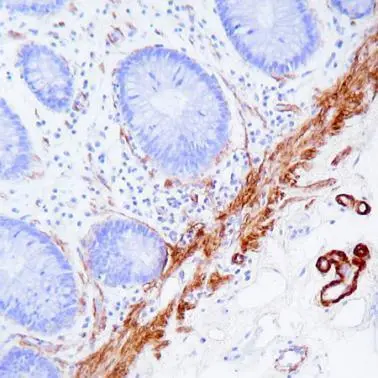
Primary Antibody Diluent
GTX28208
Product group Chemicals
Overview
- SupplierGeneTex
- Product NamePrimary Antibody Diluent
- Delivery Days Customer9
- Application Supplier NotePreparation of Reagent: Bring the diluent to room temperature and mix thoroughly before use. No further preparation is required. Procedure: 1) Pour the diluent in a clean glass container. 2) Add concentrated primary antibody directly in the diluent and mix thoroughly. 3) Diluted antibody is ready to use now and should be stored at 2-81/4 C for further use.
- ApplicationsImmunoHistoChemistry
- CertificationResearch Use Only
- Storage Instruction2°C to 8°C
- UNSPSC12352200
References
- Manipulation of components of the renin angiotensin system in renal proximal tubules fails to alter atherosclerosis in hypercholesterolemic mice.Read more
- Tumor Drug Distribution after Local Drug Delivery by Hyperthermia, In Vivo. Besse HC et al., 2019 Oct 9, Cancers (Basel)Read more
- The predictive and prognostic value of Foxp3+/CD25+ regulatory T cells and PD-L1 expression in triple negative breast cancer. Zhang L et al., 2019 Jun, Ann Diagn PatholRead more
- FOXP3 and CD25 double staining antibody cocktails identify regulatory T cells in different types of tumor tissues using tissue microarrays. Liu X et al., 2019 Feb, Ann Diagn PatholRead more
- Expression of EGFR under tumor hypoxia: identification of a subpopulation of tumor cells responsible for aggressiveness and treatment resistance. Hoogsteen IJ et al., 2012 Nov 1, Int J Radiat Oncol Biol PhysRead more
- Spatial relationship of phosphorylated epidermal growth factor receptor and activated AKT in head and neck squamous cell carcinoma. Nijkamp MM et al., 2011 Oct, Radiother OncolRead more
- PET of hypoxia with 89Zr-labeled cG250-F(ab)2 in head and neck tumors. Hoeben BA et al., 2010 Jul, J Nucl MedRead more
- Histopathologic validation of 3-deoxy-3-18F-fluorothymidine PET in squamous cell carcinoma of the oral cavity. Troost EG et al., 2010 May, J Nucl MedRead more
